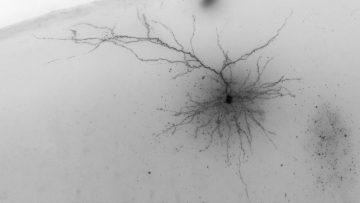Sharon Begley in STAT News:
 Lab mice endure a lot for science, but there’s often one (temporary) compensation: near-miraculous recovery from diseases that kill people. Unfortunately, experimental drugs that have cured millions of mice with Alzheimer’s disease or schizophrenia or glioblastoma have cured zero people — reflecting the sad fact that, for many brain disorders, mice are pretty lousy models of how humans will respond to a drug. Scientists have now discovered a key reason for that mouse-human disconnect, they reported on Wednesday: fundamental differences in the kinds of cells in each species’ cerebral cortex and, especially, in the activity of those cells’ key genes. In the most detailed taxonomy of the human brain to date, a team of researchers as large as a symphony orchestra sorted brain cells not by their shape and location, as scientists have done for decades, but by what genes they used. Among the key findings: Mouse and human neurons that have been considered to be the same based on such standard classification schemes can have large (tenfold or greater) differences in the expression of genes for such key brain components as neurotransmitter receptors.
Lab mice endure a lot for science, but there’s often one (temporary) compensation: near-miraculous recovery from diseases that kill people. Unfortunately, experimental drugs that have cured millions of mice with Alzheimer’s disease or schizophrenia or glioblastoma have cured zero people — reflecting the sad fact that, for many brain disorders, mice are pretty lousy models of how humans will respond to a drug. Scientists have now discovered a key reason for that mouse-human disconnect, they reported on Wednesday: fundamental differences in the kinds of cells in each species’ cerebral cortex and, especially, in the activity of those cells’ key genes. In the most detailed taxonomy of the human brain to date, a team of researchers as large as a symphony orchestra sorted brain cells not by their shape and location, as scientists have done for decades, but by what genes they used. Among the key findings: Mouse and human neurons that have been considered to be the same based on such standard classification schemes can have large (tenfold or greater) differences in the expression of genes for such key brain components as neurotransmitter receptors.
…Last year, scientists described neuropsychiatric drug development as “in the midst of a crisis” because of all the mouse findings that fail to translate to people. Of every 100 neuropsychiatric drugs tested in clinical trials — usually after they “work” in mice — only nine become approved medications, one of the lowest rates of all disease categories.
More here. (Note: Thanks to Dr. Abdullah Ali)
